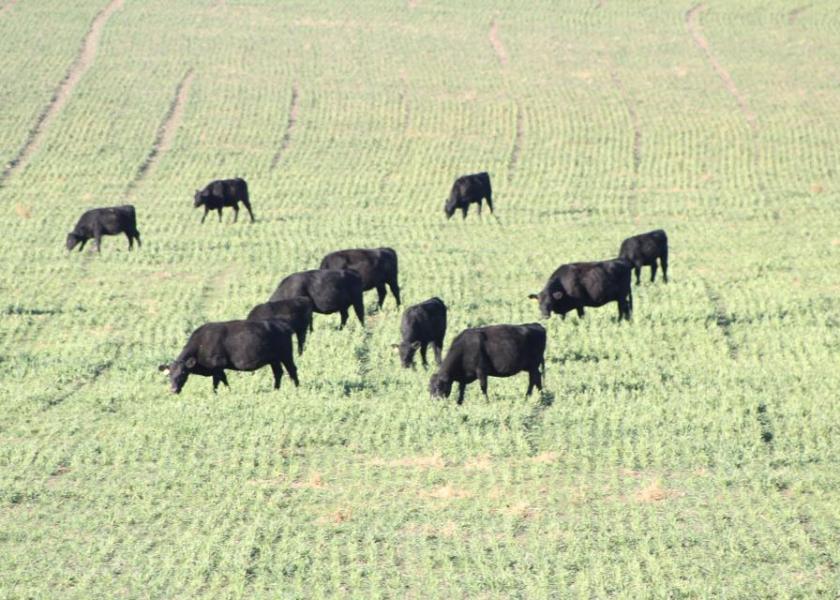Glenn Selk: Breeding Cows And Heifers On Wheat Pasture

Many areas of Oklahoma received some moisture this past week, giving hope that wheat pasture may be available for use as a winter feed. Some producers may have questions about the utilization of wheat pasture for growing replacement heifers or cows before, during, and after the breeding season. Anecdotal reports of unsatisfactory breeding performance occasionally surface when replacement heifers have been exposed to bulls or AI while grazing wheat forages. Therefore an Oklahoma State University study was conducted to compare reproductive performance of heifers grazing wheat pasture before, and during breeding, with heifers grazing wheat pasture until approximately 3 weeks before breeding.
In each of two years, 40 spring born Angus and Angus crossbred heifers were placed on wheat pasture in December and randomly assigned to one of two treatment groups in mid March. Group one (Wheat Pasture; n=20) remained on wheat pasture (mean crude protein = 26.6 %) through estrus synchronization and fixed-time AI. Group two (Dry Lot; n=20) was placed in drylot and had free choice access to a corn-based growing ration (11.1% crude protein) through estrus synchronization and fixed time AI. The heifers were inseminated on about April 5 both years. Heifers were exposed to fertile bulls starting 10 days after fixed time AI for 45 more days. Fixed time AI conception was determined at 32 days after AI by ultrasonography.
The percentage of heifers cycling at the start of estrous synchronization was 75% and 55% for Wheat Pasture and Dry Lot, respectively. Weights of Dry Lot heifers were slightly heavier than Wheat Pasture heifers (897 vs. 867 pounds) at the time of AI but were similar at ultrasound (917 vs. 910 pounds). Conception rate to Fixed time AI was similar for Wheat Pasture (53%) and Dry Lot (43%) and final pregnancy rate was similar for Wheat Pasture (95%) and Dry Lot (88%). Reproductive performance of heifers grazing wheat pasture during estrus synchronization and Fixed time AI was similar to heifers consuming a corn-based growing diet. Source: Bryant, et al. 2009 Oklahoma State University Animal Science Research Report.
Kansas State University looked at grazing wheat pasture, before and during breeding with first and second calf cows. They compared the fixed time AI and final pregnancy rates for cows on wheat with cows on native rangeland. Five years of data were summarized in the 2011 KSU Cattlemen’s Day Report. The AI pregnancy rates were 51.7% and 57.7% for wheat pasture and rangeland respectively. The final pregnancy rates after a natural breeding clean up breeding season were very similar at 94.4% and 95.9% respectively. They concluded: “This trial showed no evidence that the high protein diet of wheat pasture reduces pregnancy rate of beef cows. However, because timing of the breeding season remained constant, protein content of the diet may have moderated prior to breeding.” Source: Johnson, S.K. 2011 KSU Cattlemen’s Day Report.
Related stories:
Glenn Selk: Why 45-Day Weaning Is Important







